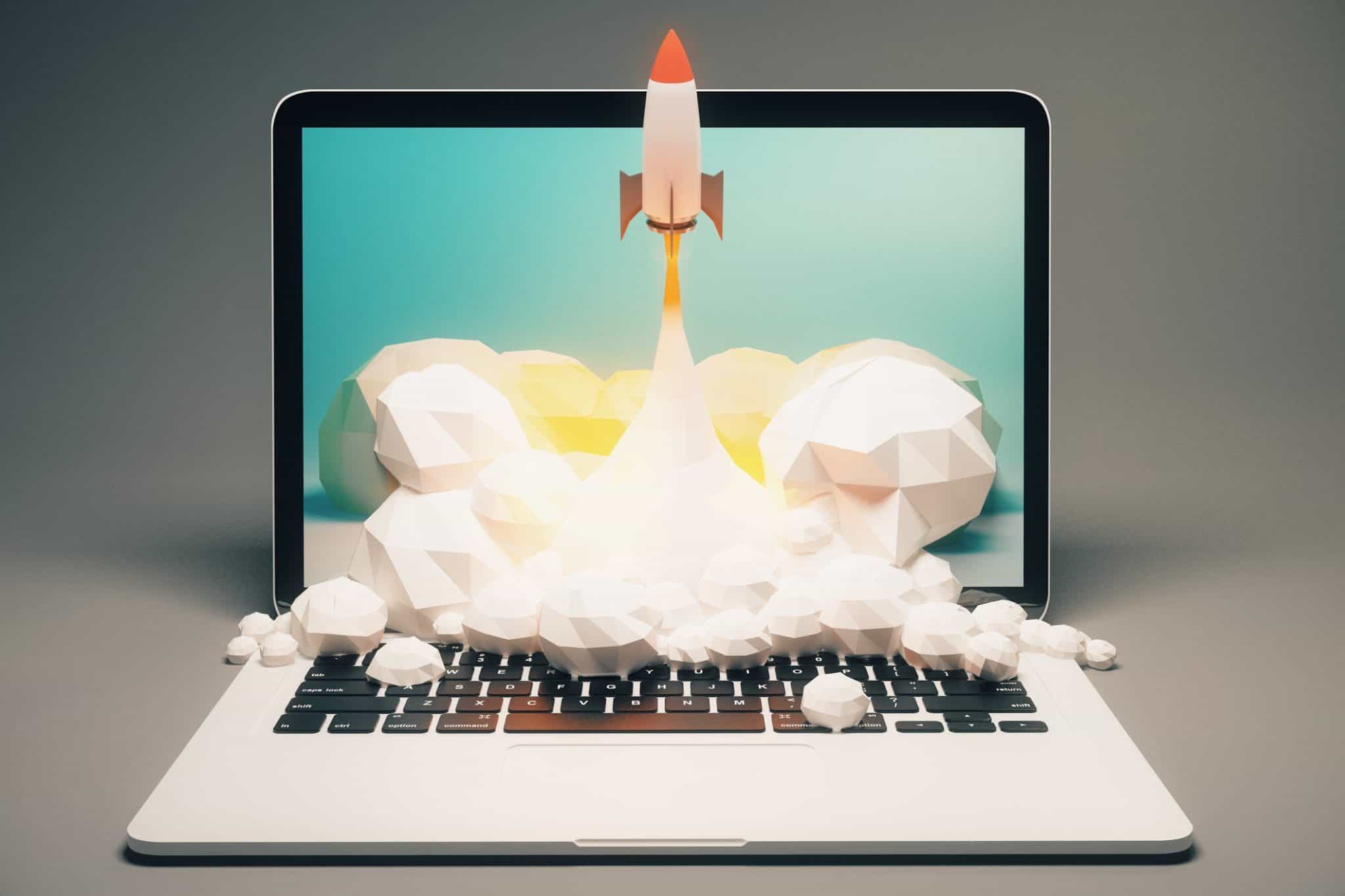If your Windows laptop is getting noticeably slow and this interferes with your ability to do effective work on a daily basis, maybe it’s time you do something about it. However, improving performance doesn’t mean replacing old hardware with new right away. The hardware may not be the culprit but your operating system instead.
There are ways to improve your laptop’s performance without spending money on a new piece of hardware but instead tweaking some system settings. Let’s find out what those ways are.
Disable System Visual Effects
You can reduce or completely disable the system visual effects which can boost your performance a little bit. You can always reverse the settings back to their default state so there’s nothing to worry about. Here’s how you can do this:
- First, press “Windows” + R key on your keyboard to open the “Run” window
- Type “sysdm.cpl”
- Navigate to the “Advanced” tab
- Under “Performance” click the “Settings” button
- Select “Adjust for best performance” which will disable all system menu animations and effects
Enable High-Performance Power Plan
Depending on what power plan performance you have enabled on your laptop or desktop, the power consumption and hardware utilization will be higher or lower.
Power plans influence the performance of your computer, its components, and can make Windows 10 run faster, or slower. For example, low-power modes significantly reduce the power consumption of the equipment, but at the cost of lower performance, while balanced mode seeks an intermediate point. By contrast, the high-performance mode prioritizes performance at the expense of consumption.
If we use a desktop PC with powerful hardware, the balanced mode can cover our needs in most cases, and in laptops, where autonomy plays an important role, it is also an excellent option. However, if the components of our PC offer very limited performance, the high-performance power plan can make an important difference.
Changing the power plan on Windows 10 on your laptop is very easy, just follow these steps:
- On the keyboard, press the Windows key and type “Edit Power Plan”.
- Now we go into the first result and choose the option “Change Advanced Power Settings”.
- Here you can either choose one of the presets, or create a personalized one
- We can change the power plan again at any time by repeating this same process.
Perform a Clean Boot
On those computers that have very limited resources (and especially little RAM), doing a clean boot can help us start the system with more resources available. This can make, in many cases, a noticeable difference, although it is especially useful for PCs and laptops that have between 1 GB and 2 GB of RAM.
By making a clean boot of the system we will get Windows 10 to work faster, reducing the number of applications and processes that load from startup and that remain in the background, consuming resources both at the level of RAM and CPU (in some cases). The amount of RAM we can release can vary considerably, but in some cases, it can reach the gigabyte.
Follow these steps in order to do a clean boot:
- Press the Windows key and type “msconfig”.
- Once done, we choose the result “System Configuration”.
- Then go to “Services” tab of the “System Settings” dialog box and activate the “Hide all Microsoft services” option.
- Finally, we click on “Disable All”.
Okay, now we go to the “Home” tab of the “System Settings” dialog box and click on “Open Task Manager”.
We go to the “Home” tab of the “Task Manager”, select all the startup elements and click on “Deactivate”.
Close the “Task Manager” and return to the “Home” tab of the “System Settings” dialog box, click on “OK” and restart the computer. We will notice a big difference in the on and off times.
Uninstall Unnecessary Apps
Having numerous apps installed on your laptop that you rarely use is not helping your device’s performance and it’s just clutter. At first, it may seem like you have a lot of apps to use but when they cease to be useful and you rarely open them it’s time you uninstall them.
How to uninstall apps:
- On your keyboard, press the Windows key and type “Add or Remove Programs.”
- Select the first result and choose from the list the apps you want to uninstall by clicking on them.
Disable Apps From Start-Up
Disabling apps from starting whenever your laptop boots is a nice way to decrease boot time and overall performance. Here’s how you can do that:
- Press the Windows key and type “Task Manager”.
- In the “Processes” right-click any of the current processes taht are running and select the “End Task” option.
- To stop them from starting on boot just go to the “Start” tab and right-click on the programs you want to disable. You can re-enable them at any time by repeating this process.
Keep System Updates & Drivers Up to Date
I know that updates have been, and continue to be, a controversial issue when we talk about Windows 10, but in the end, they are a central pillar that determine the experience of use and support of said operating system. Yes, they are very necessary, and forgetting about them can end up giving us problems.
Drivers are also very important, because they act as a link between hardware and software, and can have a huge impact on performance. To make Windows 10 work faster, without compromising its stability, the ideal is that you always follow these recommendations:
Update the drivers frequently, but using only those that are in their final version (no betas), and that come from the official website of the manufacturer (forget about third-party websites). It is important to make sure that they are compatible with our hardware, that we have chosen the right options, and that they are the right version for our operating system.
Free Up and Optimize Storage Space
Storage space is a very valuable resource, but also very limited. If we run out of space, we will not be able to install new applications and programs, and some of the ones we have installed may stop working properly or may be severely limited. This can also affect the performance of the operating system.
Freeing up storage space, and optimizing our drives, can help us make Windows 10 run faster. It is effective, simple, and fast since we only have to follow these steps to do both tasks:
- To free up space we can delete applications by following the previous steps. We can also use the “Disk Cleanup” in Windows 10. To access it, press the Windows key and type its name.
- We enter the first result, we choose the unit in which we want to free up space and we select the boxes corresponding to the contents and files that we want to delete to free up space.
- We can also reclaim space with the “Free Up Space Now” function. To get to that option, we just have to press the Windows key and type “Storage Settings”.
- To optimize the storage unit, press the Windows key and type “Defragment and Optimize Units . ” We enter the first result, we choose the unit that we want to optimize and that’s it.
Conclusion
Well, there you have it, folks. it doesn’t take much effort to boost the performance of your Windows 10 laptop, and the best thing about is that you don’t have to spend money on new hardware. We hope this information will help you and feel free to check technoish for more tech tips, tricks, and news.

